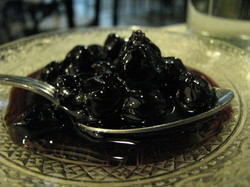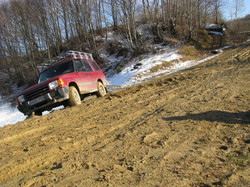Quince jelly
Leave a CommentOf course, you could use whole quinces for this, but it works just fine with skins and cores left over from other quince recipes, a tip I picked up from our jam-making friend Eduard Dumitrescu in Romania. (After all, that’s where all the pectin is.) In fact, our jam and jelly discussions with Eduard and his wife Anca lasted long into the night, as we traced the etymology of Romanian’s many words for ‘jam’…
 This is a standard jelly recipe, so you could use cooking or crab apples instead, or half apples and half hedgerow berries – rowans, rosehips, sloes, blackberries, elderberries and haws all work well. It helps to squish the simmering fruit with a potato masher once or twice, to ensure all the flavour comes out. You can also flavour such jellies with a little spice or herb, by adding these to the simmering fruit at the first stage.
This is a standard jelly recipe, so you could use cooking or crab apples instead, or half apples and half hedgerow berries – rowans, rosehips, sloes, blackberries, elderberries and haws all work well. It helps to squish the simmering fruit with a potato masher once or twice, to ensure all the flavour comes out. You can also flavour such jellies with a little spice or herb, by adding these to the simmering fruit at the first stage.
The secret to a good quince jelly, I think, is to simmer the fruit a long time so it reaches a beautiful pink colour. Like crab apples, quinces turn pink as they cook, but they take a lot longer to do so. Your jelly will be delicious with roast pork, lamb or duck, or just on toast or rice pudding.










